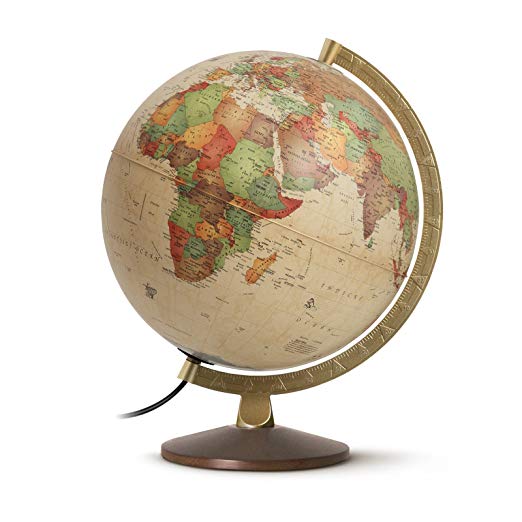Oscillating tool
I would think using an oscillating tool would work really well for this.
I'm not suggesting a brand, store, or anything, this is just a handy, random image from Google:

This will allow you to cut the rectangle in a relatively short time as well as avoid putting any real pressure on the globe. You just have to follow the normal tool usage guideline of: let the tool do the work.
There are a wide variety of cutting attachments for this, so you might find a blade that would work better than the one in this image. As a bonus, these tools are really handy for a lot of different projects, so it's not just a "one project" tool. You will find other uses for it, once you have it.
Rotary tool
You can also try a rotary tool, like a Dremel tool with a cutting disk. These disks can be fragile and hard to keep cutting in a straight line, so not my first choice for something like this.
Hot knife
With any tool when working with plastics, you want to avoid excessive heat. The heat can warp or discolor the plastic, especially when it's thin plastic. A globe like this is probably injection molded from a thermoplastic, which is usually very sensitive to heat. This is why I would avoid using a "hot knife" method.
Even if you are using a retail version of a hot knife, they tend to cool down below the melting temperature of the material you're trying to cut quickly, so it's always a race to finish your cut before it cools down too far, and the knife is stuck in your piece.
Also, these tend to leave a lip of plastic around the edge of your cut, leaving you to trim it away when it's cool, as well as avoid while it's still hot. Hot plastic and skin contact is very, very, extremely unpleasant most of the time, since they tend to stick to each other.

